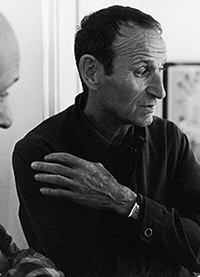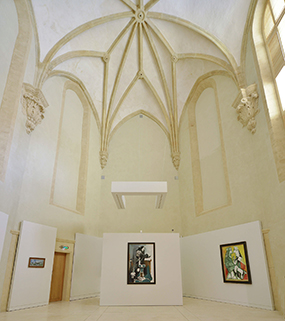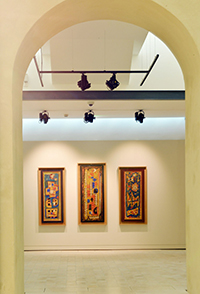The seat of the foundation is currently in Lausanne, Switzerland.
The Jean and Suzanne Planque Foundation comprises an independent board and a bureau for carrying on day-to-day business.Bureau
Florian Rodari, President, Me. Laurence Turner, SecretaryCurator
Maïlis FavreMembers
Stéphanie Ansari, Régine Kopp, Michel PfulgStory
In June 1972, shortly after stopping his activities for the Galerie Beyeler, Jean Planque concerned himself with the future of his collection, which he wanted preserved in its entirety. In the late 80s the collector, wishing to acquaint coming generations with his exceptional personal adventure, decided with his wife and a few close friends and specialists to found the Fondation Jean et Suzanne Planque. By bequeathing his collection to a foundation bearing his name, Jean Planque wished the public to share the pleasure he himself had experienced on contemplating his paintings. The Jean and Suzanne Planque Foundation was inaugurated on 13 March 1997 at La Sarraz (canton of Vaud, Switzerland). Its principal goal, as set forth in its bylaws, is “to ensure the preservation of the works assembled by Jean Planque and deemed to be inalienable, and to make them known by all appropriate means.” The Foundation’s activities increased after Planque’s death. At the urging of the collection’s curator an inventory of its paintings, drawings, and sculptures was undertaken, photographic records were made, restoration was initiated, and numerous contacts were established with a view to organizing exhibitions in suitable museums and preparing the future deposit of the works in an institution worthy of receiving them. In 2010 the Foundation decided to deposit the entire collection at the Musé Granet in Aix-en-Provence, France, for fifteen years.
The Chapelle des Pénitents blancs Granet XXe – Collection Jean Planque
Built in 1654 at the request of the Confrérie des Pénitents blancs (Confraternity of the White Penitents), probably on plans by architect Pierre Pavillon, this small chapel is located a short distance from the church of Saint-Jean de Malte and the adjoining palace that houses the collections of the Musée Granet. Abandoned in the French Revolution, the chapel was used to store animal fodder; then, from 1865 to 1878, it served as an annex of the Museum of Aix-en-Provence. In 1866 Cézanne visited an exhibition of paintings in the chapel, but none of the works displayed there found favor in his eyes. From the late 19th century on the building was used for various purposes — a school, an art school, a venue for congresses – until 2013 when it was entirely restored and fitted out to house the Planque Collection.Gifts and Acquisitions
Since Jean Planque’s death in August 1998 several artists who knew him personally or who admired his collection of paintings in exhibitions over the years have desired to make a gift to the Foundation of one or more of their works to honor the collector’s memory. In addition to the bequest of Jean Planque’s friend Kosta Alex of some thirty sculptures, collages and drawings, the collection has recently been enriched by gifts from Alexandre Hollan and Sorel Etrog, artists the collector was particularly interested in but was unable to acquire major works from. Finally, friends of Jean and Suzanne and members of the Foundation have expressed the wish to bequeath artworks bought on Jean Planque’s advice. This generosity proves that Jean Planque’s action for living art continues today in a spirit devoid of every profit motive. Finally, in the last few years the Foundation has granted itself the scope to acquire and/or receive works by artists who have worked or continue to work in keeping with the art in the original collection. These special acquisitions – selected in the spirit of the collector and necessarily accompanied by ancillary gifs – serve to enrich the Foundation’s holdings. In exhibitions of the collection they are plainly labeled as having been “acquired in the collector’s memory” to distinguish them from his personal choices.Print Collection
The collection of the Jean and Suzanne Planque Foundation also contains books illustrated with prints by Picasso, Dubuffet, Miro, and Clavé, in addition to numerous other artists close to the Galerie Beyeler. This collection of works on paper is now preserved in the Cantonal Prints Collection at the Jenisch Museum in Vevey, Switzerland. The Foundation was obliged to break up its complete collection of the 347 Series that Picasso etched on copper between Spring and Autumn 1968 and to sell it partially in 2006 to settle certain death duties to the Canton of Vaud.

